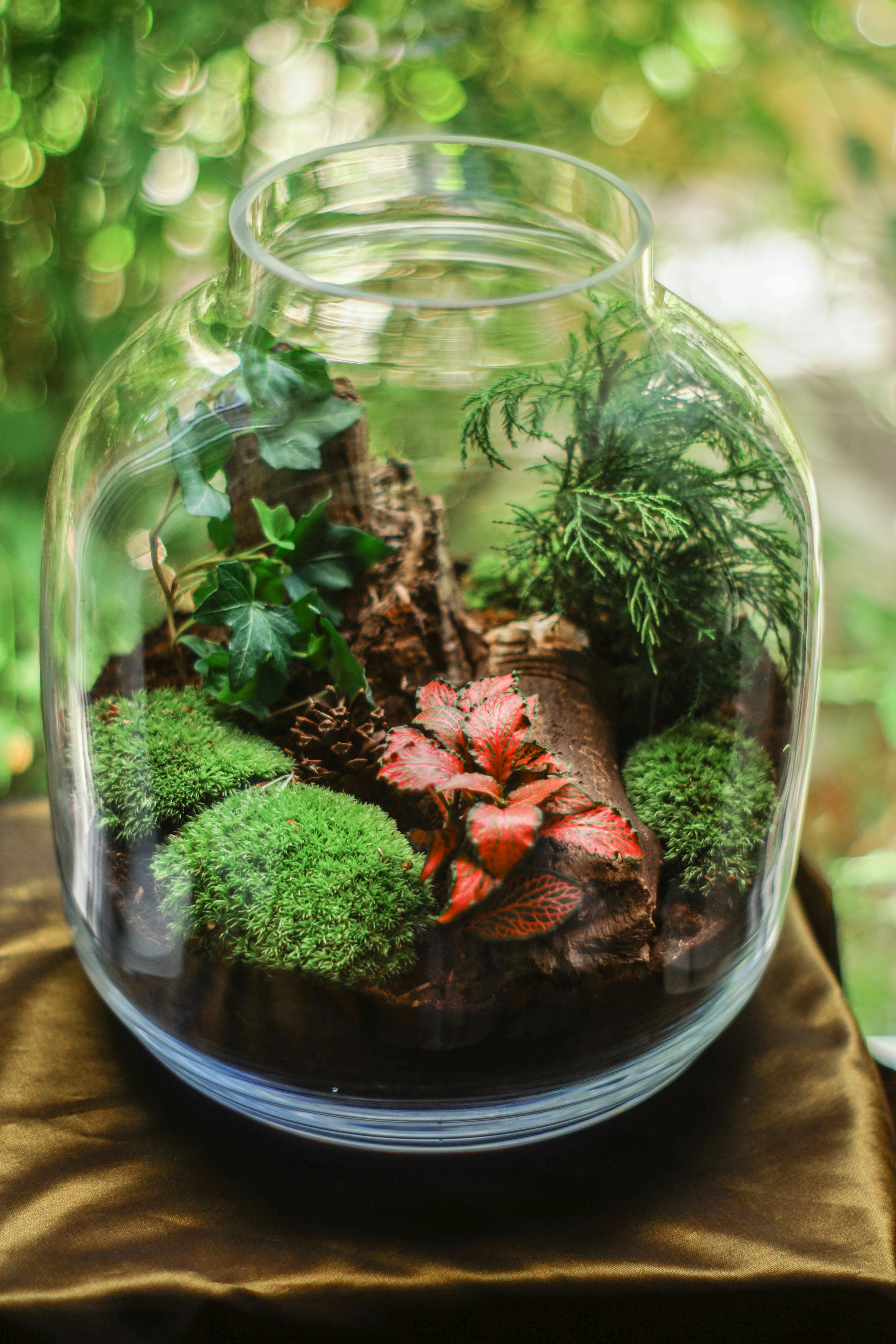Enchanted Terrarium Worlds: Miniature Ecosystems as Living Art
Imagine peering into a glass sphere, where a lush miniature forest thrives in perfect harmony. Tiny ferns unfurl their delicate fronds, while moss-covered stones create a magical landscape. This isn't a scene from a fairy tale – it's the captivating world of enchanted terrariums, a burgeoning trend in home decor that's capturing the imagination of design enthusiasts and plant lovers alike.

The Origins of Enchanted Terrariums
The concept of terrariums dates back to the 19th century when Dr. Nathaniel Bagshaw Ward accidentally discovered that plants could thrive in sealed glass containers. His invention, the Wardian case, revolutionized the transportation of plants across long distances and laid the foundation for modern terrariums.
However, the enchanted terrarium as we know it today is a relatively recent phenomenon. It emerged from the intersection of traditional terrarium-making, miniature gardening, and fantasy-inspired design. The rise of social media platforms like Instagram and Pinterest has fueled the popularity of these magical miniature worlds, with enthusiasts sharing their creations and inspiring others to embark on their own terrarium adventures.
Designing Your Enchanted Realm
Creating an enchanted terrarium is an exercise in imagination and horticultural skill. The process begins with selecting the right container – often a glass vessel with interesting shapes or details that complement the miniature landscape within. Clear glass is preferred to showcase the layers and intricate details of the terrarium.
The next step involves careful layering of materials. A base of activated charcoal helps with drainage and odor control, followed by a layer of small pebbles or gravel. The growing medium, typically a well-draining potting mix, comes next. This is where the magic truly begins – sculpting miniature hills, valleys, and pathways to create a fantastical landscape.
Plant selection is crucial in enchanted terrariums. Miniature ferns, mosses, and small tropical plants are popular choices due to their ability to thrive in humid environments. Unique varieties like Fittonia (nerve plant) with its striking leaf patterns or Selaginella (spikemoss) with its delicate, lacy appearance add to the otherworldly feel.
Bringing the Magic to Life
What sets enchanted terrariums apart from their traditional counterparts is the incorporation of whimsical elements. Tiny figurines, miniature houses, or even LED lights can transform a simple plant arrangement into a captivating scene straight out of a fairy tale.
Designers are getting increasingly creative with these magical touches. Some incorporate small crystals or geodes to create the illusion of mystical caves or glowing pools. Others use colorful sand or crushed glass to form rainbow paths or shimmering streams. The key is to strike a balance between the natural elements and these fantastical additions, ensuring that the overall effect is enchanting rather than overwhelming.
The Art of Maintenance
One of the most appealing aspects of enchanted terrariums is their low-maintenance nature. Once established, these miniature ecosystems require minimal care. The closed environment of a terrarium creates its own water cycle, with moisture condensing on the glass and falling back onto the plants.
However, some attention is still necessary to keep the magic alive. Regular misting may be required for open terrariums, and occasional pruning helps maintain the desired shape and prevent overgrowth. It’s also important to monitor for any signs of disease or pests, addressing issues promptly to preserve the health of the miniature ecosystem.
Enchanted Terrariums in Interior Design
These magical miniature worlds have found their place in various interior design styles. In minimalist spaces, they serve as living focal points, adding a touch of nature and whimsy without cluttering the overall aesthetic. In more eclectic or bohemian interiors, enchanted terrariums complement other natural elements and add to the sense of wonder and exploration.
Designers are incorporating enchanted terrariums in innovative ways. Some are creating large-scale installations, with multiple terrariums of varying sizes grouped together to form a mesmerizing display. Others are integrating them into furniture design, with coffee tables and side tables featuring built-in terrariums protected by glass tops.
The Therapeutic Benefits of Miniature Worlds
Beyond their aesthetic appeal, enchanted terrariums offer surprising therapeutic benefits. The act of creating and tending to these miniature worlds can be deeply relaxing and meditative. It provides a creative outlet and a connection to nature, especially valuable for those living in urban environments with limited access to green spaces.
Psychologists have noted that caring for plants, even on a small scale, can reduce stress and anxiety. The contained nature of terrariums also makes them ideal for individuals who may be intimidated by larger-scale gardening projects. The sense of accomplishment in nurturing a thriving miniature ecosystem can boost self-esteem and provide a sense of purpose.
Future Trends in Enchanted Terrariums
As the popularity of enchanted terrariums continues to grow, we’re seeing exciting developments in this niche. Artisans are experimenting with unconventional containers, from vintage light bulbs to antique clocks, pushing the boundaries of what a terrarium can be.
Technology is also making its way into these magical worlds. Some designers are incorporating small, waterproof LED lights or even tiny solar-powered elements to create dynamic, changing landscapes within the terrariums. There’s also a growing interest in themed terrariums that reflect popular culture, from miniature Harry Potter-inspired scenes to tiny Star Wars landscapes.
The enchanted terrarium trend is more than just a passing fad – it’s a testament to our enduring fascination with nature and our desire to bring a touch of magic into our everyday lives. As we continue to seek ways to connect with nature in our increasingly urban and digital world, these miniature ecosystems offer a perfect blend of horticulture, art, and imagination. They remind us that even in the smallest of spaces, there’s room for wonder and enchantment.





